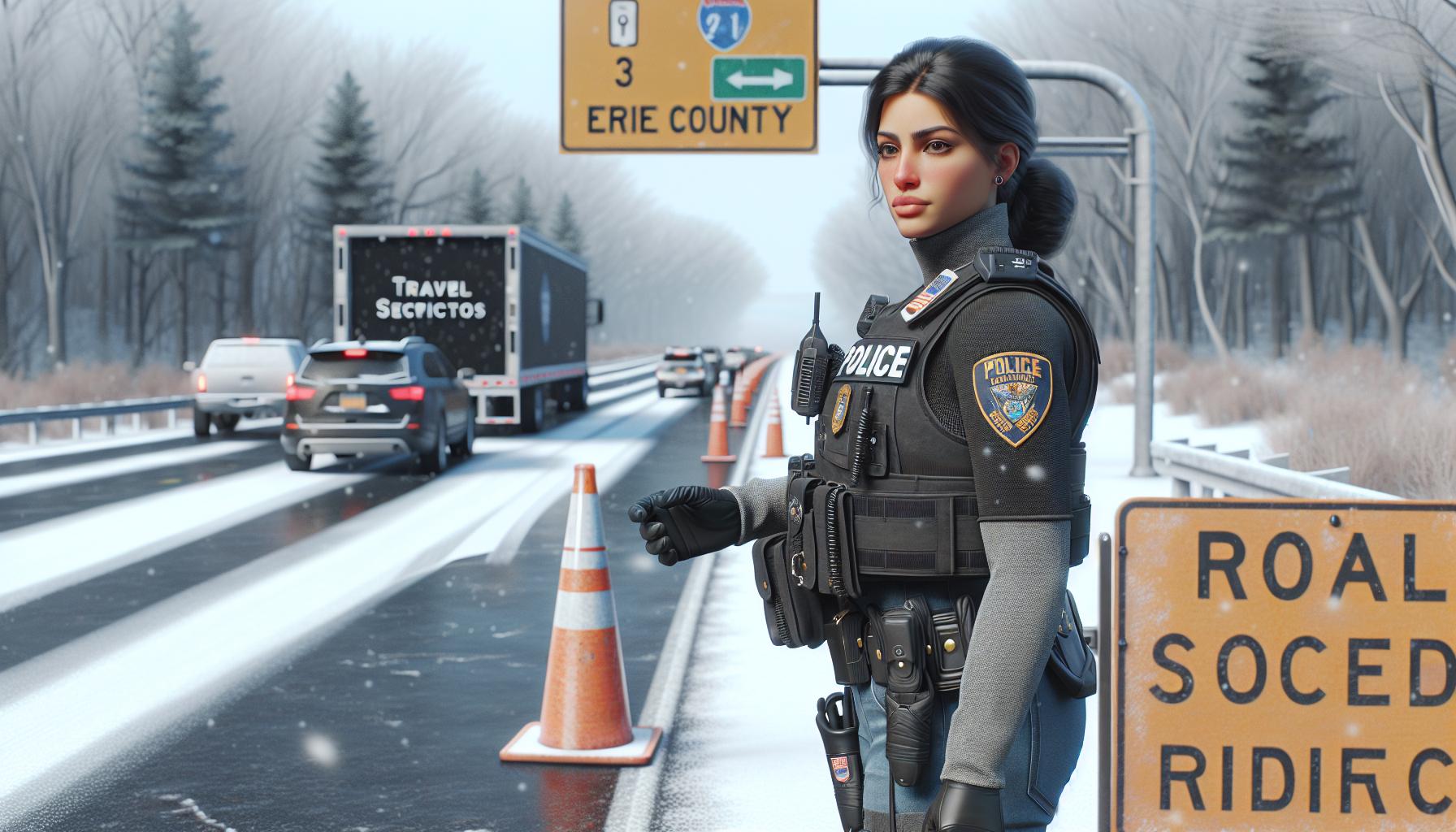Travel can be a thrilling escape, but when unexpected restrictions come into play, it can turn into a frustrating ordeal. Recently, Erie County implemented a travel ban that’s left many people wondering about its implications. As someone who loves exploring new places, I understand the anxiety that comes with such sudden changes.
This travel ban affects not just residents but also visitors and businesses relying on tourism. It’s crucial to stay informed about the reasons behind the ban and how it might impact your plans. In this article, I’ll dive into the specifics of the travel ban in Erie County, exploring its causes and what it means for travelers like us. Whether you’re planning a trip or just curious about local policies, understanding these restrictions is essential for navigating your travel options effectively.
Key Takeaways
- The Erie County travel ban is a response to rising public health concerns, primarily due to increased COVID-19 cases, aimed at protecting community safety.
- The ban significantly impacts local businesses reliant on tourism, leading to revenue declines, job losses, and potential closures, which strains the local economy.
- Residents face heightened anxiety and social isolation as travel restrictions limit interactions and community events, affecting mental health and social cohesion.
- Legal authority for the travel ban stems from public health laws, supported by data indicating health risks; compliance is monitored through law enforcement with penalties for violations.
- Community reactions to the ban are mixed, with some supporting public health measures while others express frustration over economic consequences, prompting calls for clearer communication from officials.
Travel Ban in Erie County
The travel ban in Erie County affects both residents and tourists, leading to increased anxiety regarding travel plans and business operations. Understanding its background and reasons provides clarity for navigating these restrictions.
Background and Context
The travel ban emerged in response to rising public health concerns. Local authorities implemented measures to mitigate the spread of illnesses and ensure community safety. Erie County authorities based the decision on data reflecting an increase in infections and hospitalizations, making the need for immediate action apparent. The ban directly impacts travel-related businesses, contributing to mounting economic pressure in the region.
Reasons for the Travel Ban
The primary reasons for the travel ban include:
- Public Health Risks: A significant rise in COVID-19 cases and other communicable diseases within Erie County necessitated swift action.
- Healthcare Capacity: Overburdened healthcare facilities prompted the need to limit non-essential travel, ensuring resources remain available for critical cases.
- Safety Measures: Protecting vulnerable populations, including the elderly and those with pre-existing health conditions, became a key focus for local authorities.
- Preventing Spread: Limiting travel helps decrease the chances of disease transmission, protecting both residents and visitors.
These reasons underscore the complexity of the travel ban, reflecting the balance between public health priorities and the economic wellbeing of the local community.
Impact on Residents and Visitors

The travel ban in Erie County significantly influences both residents and tourists. It’s crucial to examine its economic effects and social implications.
Economic Effects
Travel-related businesses face severe challenges due to the ban. Hotels, restaurants, and local attractions experience a sharp decline in customer traffic. For example, hotel occupancy rates dropped to 30% in the first month of the ban, impacting revenue. Businesses reliant on tourism may struggle to sustain operations, leading to layoffs and potential closures. Job losses in these sectors contribute to increased unemployment rates, straining the local economy further. Local governments may also see reduced tax revenue, hindering funding for essential services. Consequently, the overall economic landscape of Erie County shifts, creating uncertainty for business owners and employees alike.
Social Implications
Residents deal with increased isolation amidst the travel restrictions. Limited social interactions lead to a heightened sense of anxiety and frustration. Many families face challenges in connecting with loved ones who reside outside the county. Community events, festivals, and gatherings may get canceled, weakening social cohesion. Moreover, the travel ban creates a feeling of mistrust towards visiting tourists, fostering divisions between locals and visitors. Mental health issues may escalate as residents grapple with the ongoing restrictions, highlighting the necessity for public support and resources to navigate these changes.
Legal Considerations

Understanding the legal framework surrounding the travel ban in Erie County is essential for residents and travelers. Comprehending local government authority and the challenges arising from the ban provides clarity on its implications.
Local Government Authority
Local government possesses the authority to implement travel bans under public health laws. Erie County officials must adhere to guidelines established by state and federal health agencies. Decisions are often based on statistical data indicating increased health risks, such as rising COVID-19 cases. Legal precedents support the need for such measures in emergencies, prioritizing community safety and healthcare capacity. Courts generally uphold travel restrictions when justified by public health data, allowing local authorities to enforce necessary actions to curb outbreaks.
Challenges and Reactions
The travel ban poses numerous challenges for local authorities and residents. These restrictions lead to pushback from business owners reliant on tourism, prompting protests and calls for clearer communication. Legal battles may arise as businesses seek to challenge the ban’s validity, citing economic harm and potential overreach in authority. Local residents express concern about the long-term effects on community welfare and mental health. Reactions include both support for public health initiatives and opposition from those negatively impacted by the ban, creating a complex landscape for local governance. It’s crucial for Erie County officials to balance public safety with economic ramifications as they navigate these ongoing challenges.
Enforcement and Compliance

Enforcement of the travel ban in Erie County involves specific measures and community reactions that shape its effectiveness and public acceptance.
Measures Implemented
Local law enforcement agencies actively monitor compliance with the travel ban, employing patrols and checkpoints at key entry points. They disseminate information about the ban through various channels, including social media and local news outlets. Fines and penalties for non-compliance aim to deter violations, with penalties reaching up to $500 for individuals who disregard travel restrictions. Health officials conduct random checks on businesses to ensure adherence to safety protocols, enforcing capacity limits and social distancing guidelines. Public health campaigns encourage residents and visitors to stay informed and abide by regulations to safeguard community health.
Community Response
Community response to the travel ban varies, with some individuals supporting the measures while others express frustration. Local residents emphasize the need for health safety, recognizing the importance of mitigating virus spread. However, businesses reportedly suffer severe economic impacts, prompting protests and calls for more support from local authorities. Numerous feedback sessions reveal concerns about the ban’s longevity, with citizens advocating for clear communication from officials regarding its duration and criteria for lift. Grassroots initiatives emerge, providing mental health resources for those affected by the isolation associated with the ban, fostering solidarity among community members during this challenging time.
Challenging Environment
The travel ban in Erie County has created a challenging environment for both residents and businesses. While it’s essential to prioritize public health and safety, the economic and social implications can’t be overlooked. I see firsthand how this ban affects community connections and local economies.
As we navigate these tough times it’s crucial to support one another and seek resources to cope with the emotional toll. I believe that with open dialogue and collaboration we can find ways to address these challenges while keeping our community safe. The future may hold uncertainties but I’m hopeful that we can emerge stronger together.